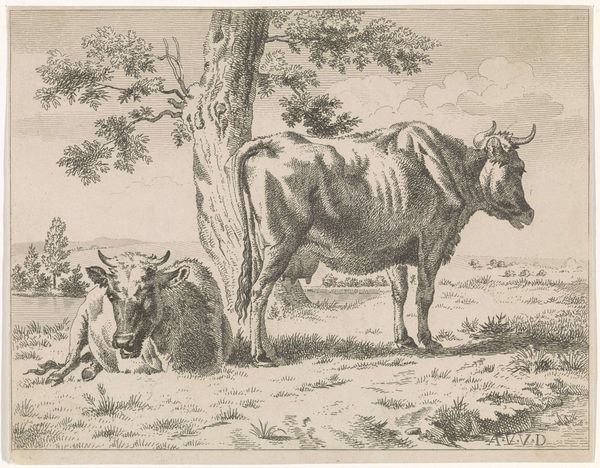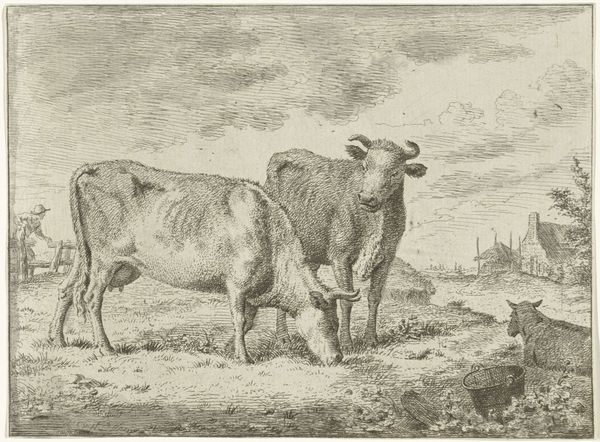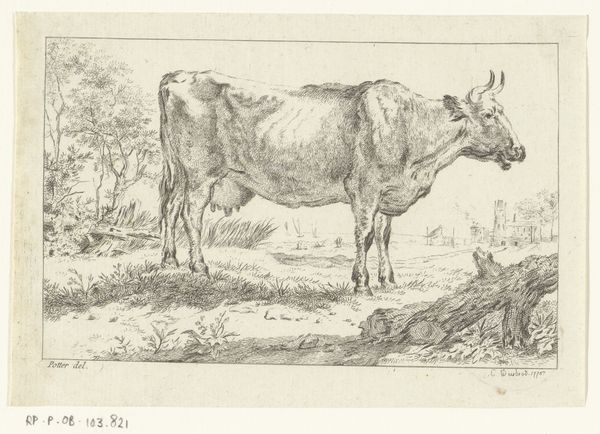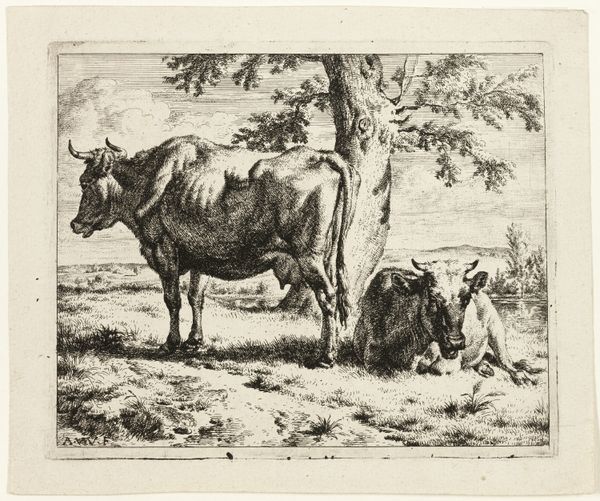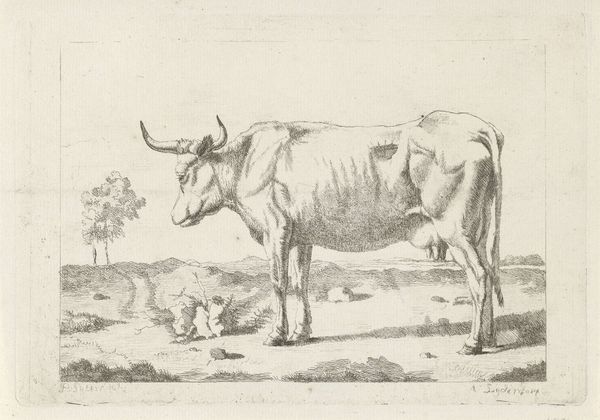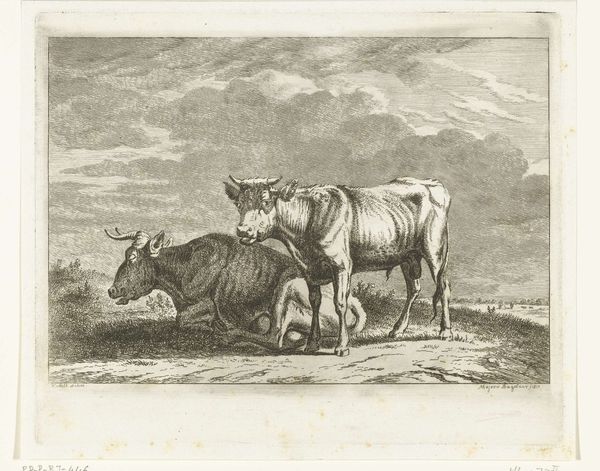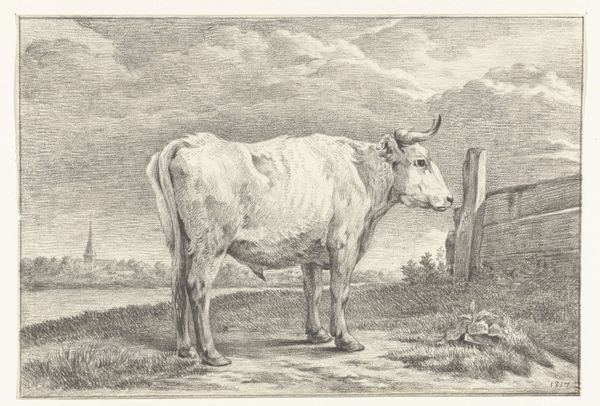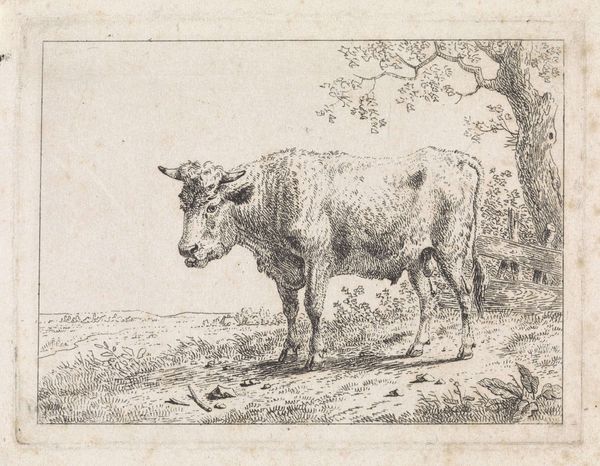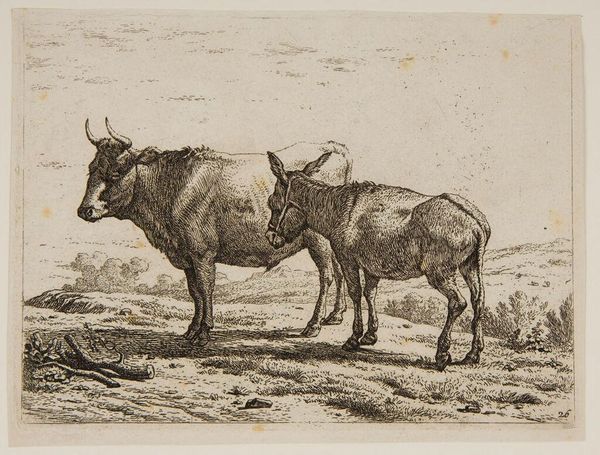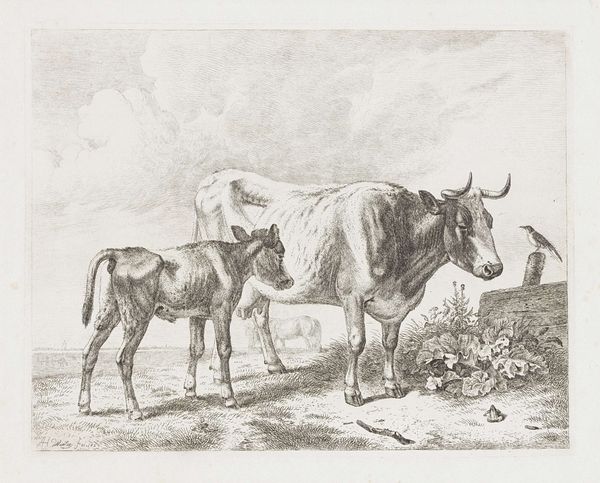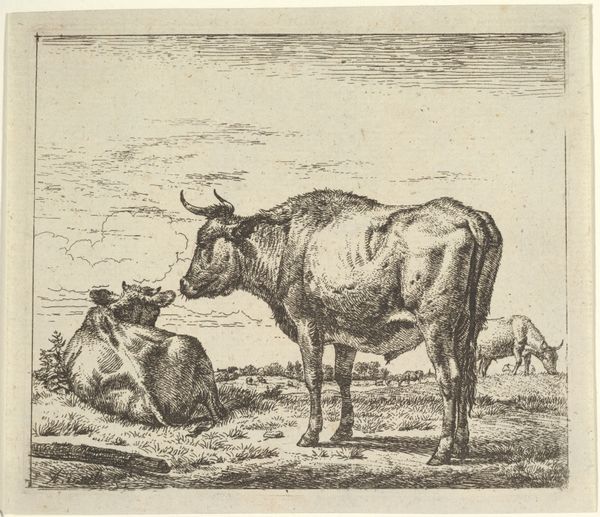
print, etching
#
animal
# print
#
etching
#
landscape
#
genre-painting
#
realism
Dimensions: height 127 mm, width 186 mm
Copyright: Rijks Museum: Open Domain
Frédéric Théodore Faber made this etching of a shepherd with his flock sometime before 1844. Etching is an indirect method of printmaking, where the artist protects selected parts of a metal plate with a waxy, acid-resistant ground, and then immerses the plate in acid. The acid bites into the exposed metal, creating an image that is then inked and printed. Here, Faber uses this technique to its full potential. Look closely, and you can see a whole range of tones created by the layering of lines, which is a testament to his skill. The fineness of the etched lines allows for an abundance of detail, from the texture of the sheep’s wool to the atmospheric sky. The social context of this work is also important. Etchings like these were often produced in multiples and sold to a wide audience, making art accessible beyond the wealthy elite. In this way, Faber’s Herder met kudde straddles the line between fine art and craft, showcasing both artistic skill and a connection to broader social and economic practices.
Comments
No comments
Be the first to comment and join the conversation on the ultimate creative platform.
